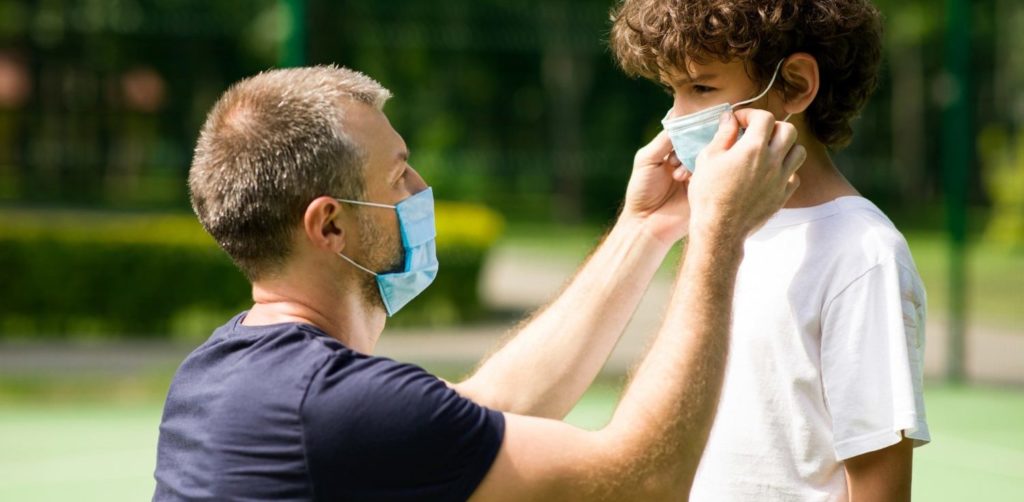Even with a COVID-19 vaccine in our communities, wearing a mask correctly is still a critical part of your comprehensive approach to protecting yourself and others. The Centers for Disease Control and Prevention (CDC) continues to emphasize that masks protect both you and those whom you encounter in the course of daily life.
Since the pandemic began, the CDC and other health experts have promoted a multi-step process to help slow the spread of the extremely contagious respiratory infection: stay at home whenever possible; social distance by staying at least 6 feet from others outside of your household; clean your hands frequently with soap and water or alcohol-based hand sanitizer; avoid large gatherings; and wear a face mask in public.
While people are still willing to practice some public health measures, fatigue has set in and people are becoming less willing to wear a mask or to wear it correctly. A December 2020 HealthDay/Harris Poll of 2,027 adults in the U.S. found that 66% of respondents reported they “always” wear a mask when they leave their home—a drop from 72% just two months earlier. With the release of the COVID vaccine, mask use declined across all demographics, with the fastest drops in men and young adults. This is despite the fact that almost two-thirds of respondents said that either they or someone they knew had been hospitalized or passed away due to COVID-19.
With highly contagious COVID variants being identified and surges continuing, mask use is still being encouraged, especially indoors and in large groups where transmission is easy. Learn more with these common questions and answers.
Q. If I’ve already had my COVID-19 vaccination series, do I still need to wear a mask?
A. Yes. It takes time to develop immunity after vaccination, so wearing a mask may protect you from infection while your body develops the antibodies and other substances needed to fight the virus. Additionally, the vaccine is not 100% guaranteed. Vaccination will likely keep you from getting COVID-19, and certainly reduce your chances of severe illness. But there is still a small chance of breakthrough cases and therefore if you can get sick, you can spread it to others. Keep wearing a mask in public until public health officials say it’s safe to stop.
Q. Why should I wear a mask?
A. It’s possible for you to have COVID-19 and not have symptoms (asymptomatic). You can also have COVID-19 and be contagious before your symptoms develop (pre-symptomatic). In either of these cases, wearing a face mask that covers your nose and mouth helps protect others by reducing the respiratory droplets that can spread COVID-19 when you breathe, cough, talk or sneeze. The CDC reports that proper mask use can stop the wearer from spreading respiratory particles by as much as 80%.
The mask offers you protection from COVID-19, too. Studies have found that cloth masks can help filter out some of the infectious droplets and particles, potentially stopping them from reaching your nose and mouth and infecting you.
Q. Do masks cause low oxygen levels?
A. No. Numerous published studies have found no significant changes in oxygenation for healthy people who are performing normal activities. In fact, in a small study published in JAMA, three-layer disposable facemasks were distributed to a group of 25 seniors ages 65 and older. The seniors were asked to wear their mask and use a pulse oximeter to monitor their oxygen saturation. Their mean oxygen level was 96.1% before the test, 96.5% during the test while wearing the mask, and 96.3% after wearing the mask. There were no significant changes associated with wearing a mask.
Q. What type of mask should I wear?
A. The CDC says the general public should wear cloth face masks or disposable non-medical masks rather than N95 respirators or medical grade masks. The CDC says your mask should:
• Be the right fabric. Breathable fabrics, such as cotton and cotton blends, are best. Avoid masks made from materials that are hard to breathe through—such as leather or plastic.
• Be tightly woven. Hold your mask to the light. Can you see through it? If so, the fabric is probably not woven tightly enough to be effective. A scarf or ski mask isn’t woven tightly enough.
• Fit properly. The mask should snugly cover your nose and mouth, with no large gaps on the sides.
• Offer layers of protection. Single layer masks aren’t as effective. Masks should have two or three layers of fabric.
Remain Diligent
An effective vaccine is an important step to ending the pandemic. However, it’s important to continue to be diligent about all the COVID-19 precautions—including mask wearing—until everyone has been vaccinated and/or herd immunity takes place and we understand more about new COVID-19 variants.
Updated 7/13/21
